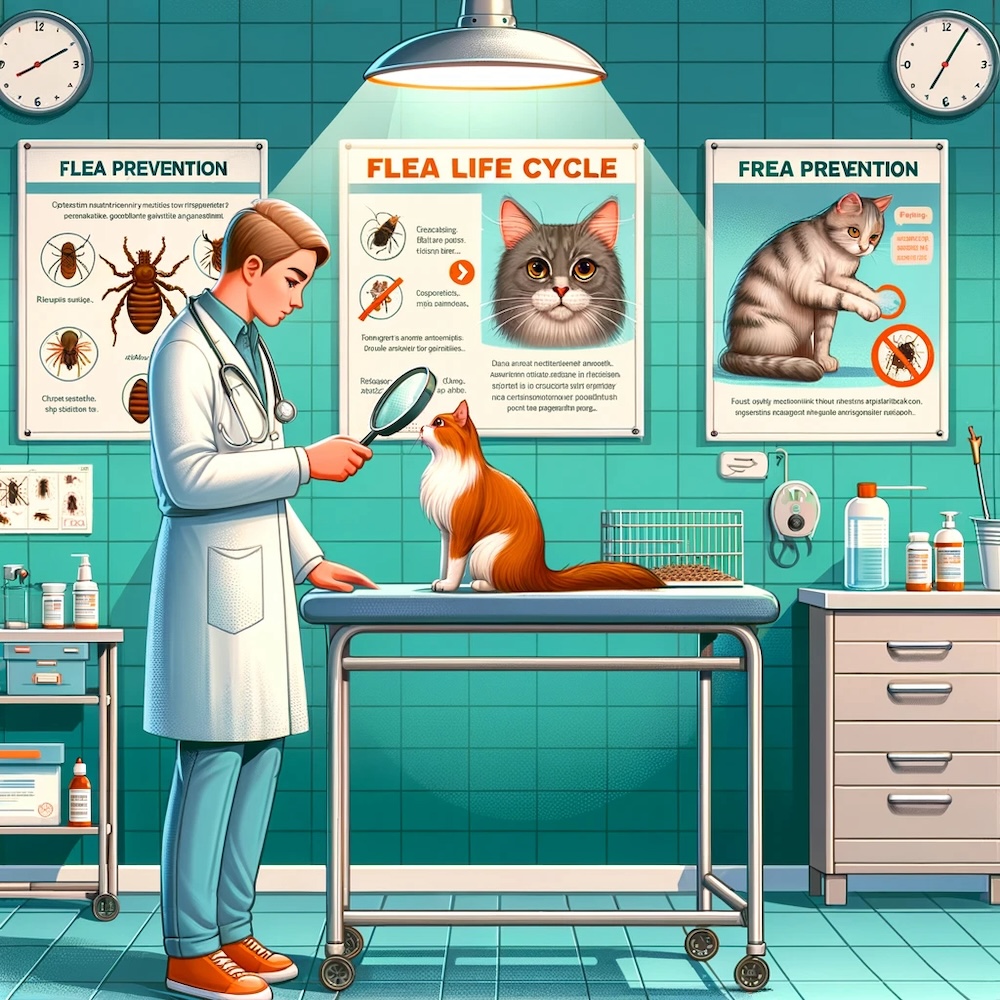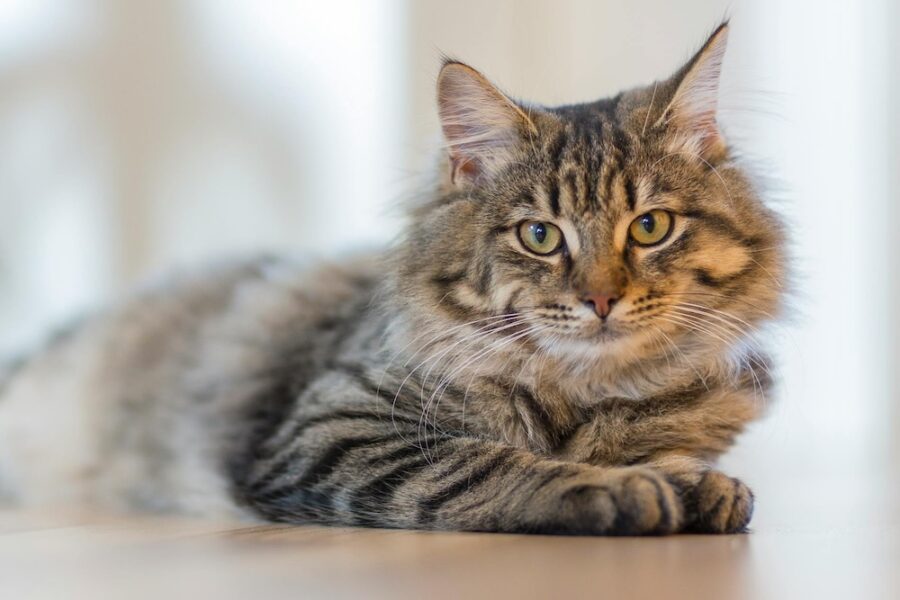Fleas are a common nuisance for pets and their owners, particularly during the warmer months. However, in certain climates and home environments, these pesky parasites can be a year-round problem. This guide offers detailed advice on how to protect your feline friends from fleas, with a focus on prevention, treatment, and maintaining a flea-free environment.
Understanding the flea lifecycle
To effectively combat fleas, it’s important to understand their lifecycle. Fleas go through four stages: egg, larva, pupa, and adult. The adult fleas are the ones you typically notice on your cat, biting and feeding on blood. However, the majority of a flea population (eggs, larvae, and pupae) actually lives in the environment, not on your pet.
Why warmer months?
Fleas thrive in warm, humid conditions. Typically, their activity peaks during the spring and continues through early autumn. In temperatures of 18-26 degrees centigrade and humidity levels of 75-85%, fleas can complete their lifecycle in just 14 days. This rapid reproduction makes them particularly challenging to control during these months.
Preventive measures
Prevention is the most effective strategy in the battle against fleas. Here are some preventive measures every cat owner should consider:
Regular use of flea control products
Consult with your vet to choose the right flea prevention product for your cat. These might include topical solutions, oral medications, or flea collars. It’s crucial to use these products as directed and year-round, especially if you live in a warm climate or have an indoor heating system that could foster a flea-friendly environment even in winter.
Environmental control
Since the bulk of the flea population lives in the environment, treating your home is just as important as treating your pet. Regular vacuuming of floors, carpets, and furniture can remove many of the eggs, larvae, and pupae. Washing your cat’s bedding and your own bedding (if your cat sleeps on your bed) in hot water weekly can also help reduce the flea population.
Natural deterrents
For those preferring natural remedies, certain essential oils like lavender, peppermint, and lemongrass are known to repel fleas. However, cats are particularly sensitive to essential oils, so it’s important to use these remedies cautiously and consult with your vet first. Diatomaceous earth can also be used in areas where pets frequent, acting as a natural, non-toxic flea killer.
Spotting and dealing with infestations
Even with preventive measures, flea infestations can occur. Here’s how to spot and deal with them effectively:

Recognising signs of fleas
Early detection is key. Signs of flea activity include excessive scratching, licking, or biting at the skin, hair loss, red or irritated skin, and the presence of tiny black dots on your cat’s skin (flea dirt). Regularly check your pet’s coat, especially after they’ve been outside.
Immediate treatment
If you discover fleas on your cat, it’s essential to act quickly. Start by administering a vet-recommended flea treatment specifically designed for cats. You may also need to treat other pets in the household.
Clean and quarantine
Wash all pet bedding, your bedding, and any removable furniture covers. Vacuum carpets, rugs, and soft furnishings thoroughly. Dispose of the vacuum bag immediately after cleaning (or empty the canister outside if you have a bagless model) to prevent any flea escapees.
Maintaining a flea-free home
Continuously managing the environment is crucial to preventing future infestations. Implement these tips as part of your routine:
Regular cleaning
Regular cleaning is your best defense. Vacuum frequently, and continue to wash pet and human bedding regularly.
Year-round vigilance
Don’t relax your flea prevention efforts, even in the cooler months. Continue using flea treatments according to the schedule recommended by your veterinarian.
Professional help
If flea problems persist or you’re dealing with a severe infestation, professional pest control can provide a more thorough approach to eliminating fleas from your home.
Conclusion
Fleas are more than just a nuisance; they can cause serious health issues for your cat and discomfort for everyone in the household. By understanding the seasonal risks, implementing preventive measures, and responding promptly to infestations, you can keep your beloved cats healthy and your home flea-free. Remember, the key to effective flea control is a combined approach that treats both your pet and the environment.
Frequently asked questions
1. What is the most effective flea treatment for cats?
Answer: The most effective flea treatments for cats are those approved by the FDA or EPA, ensuring they are safe and effective. Options include topical treatments, oral medications, and flea collars. Each type has its pros and cons, such as ease of application, duration of effectiveness, and scope of parasite protection. Vets often recommend products that protect against more than just fleas, including ticks, heartworms, and other parasites. Always consult with your vet to find the best option for your cat’s specific needs and lifestyle.
2. How often should I treat my cat for fleas?
Answer: The frequency of flea treatment depends on the type of preventative used and the level of flea exposure. Typically, topical and oral flea preventatives are administered monthly. Some flea collars can last up to 8 months. It is crucial to follow the specific instructions on the product label or those given by your veterinarian to ensure continuous protection, especially in areas with year-round flea activity.
3. Can indoor cats get fleas?
Answer: Yes, indoor cats can get fleas. Fleas can enter homes on clothing, other pets, or through small openings. Once inside, they can infest carpeting, furniture, and bedding. It’s important for all cat owners, even those with indoor pets, to use flea prevention tactics and maintain a clean environment to minimize the risk of flea infestations. Regular vacuuming and washing of pet bedding in hot water are recommended practices to control flea populations in the home.
For those looking for effective cat health tips, you can explore Pussycat Friends for products and advice to keep your cat healthy and comfortable year-round.
